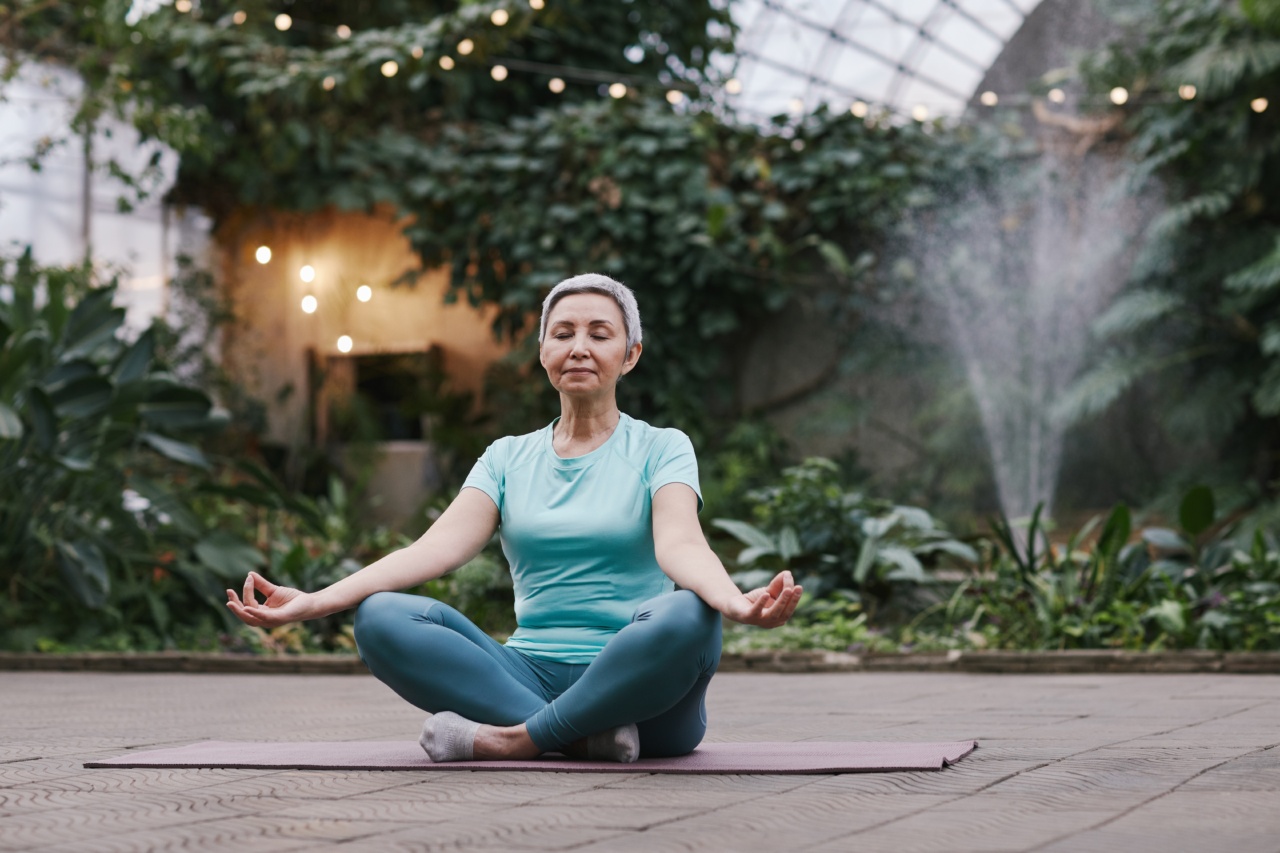Living a heart-healthy lifestyle is vital for overall well-being and longevity. Regular exercise is one of the key elements in maintaining a healthy heart.
However, many people find it challenging to incorporate exercise into their daily routine due to various factors such as lack of time, motivation, or physical limitations. In this article, we will explore a heart-healthy exercise regimen that not only promotes cardiovascular health but also allows for relaxation and stress reduction.
The Importance of Heart Health
Before delving into the exercise regimen, it is essential to understand why taking care of our hearts is crucial. The heart is a vital organ responsible for pumping oxygen-rich blood to all parts of the body.
When our hearts are healthy, they work efficiently, reducing the risk of various conditions such as heart disease, high blood pressure, and stroke. Regular exercise helps strengthen the heart muscle, improves blood circulation, and lowers cholesterol levels.
Finding the Right Exercise
When it comes to choosing an exercise regimen, it is essential to select activities that you enjoy and can incorporate into your daily routine. The key is to find a balance between cardiovascular workouts and relaxation exercises.
Here are some heart-healthy exercises that promote relaxation:.
1. Yoga
Yoga is an ancient practice that combines physical postures, breathing techniques, and meditation. It has been shown to reduce stress, lower blood pressure, and improve cardiovascular health.
Incorporating yoga into your exercise regimen can help relax the mind and body while providing a gentle workout for the heart.
2. Tai Chi
Tai Chi is a low-impact exercise that originated in ancient China. It involves slow, flowing movements and deep breathing, promoting relaxation and balance.
Regular practice of Tai Chi has been associated with improved heart health, reduced blood pressure, and increased cardiovascular endurance.
3. Walking
Walking is a simple yet highly effective exercise that can be done by people of all ages and fitness levels. It requires no special equipment and can easily be incorporated into your daily routine.
Brisk walking for at least 30 minutes a day helps strengthen the heart, lower cholesterol levels, and reduce the risk of heart disease.
4. Swimming
Swimming is a low-impact aerobic exercise that provides a full-body workout while being gentle on the joints. It increases heart rate, improves lung capacity, and promotes cardiovascular health.
Swimming also has a calming effect on the mind, making it an excellent choice for relaxation.
5. Cycling
Cycling is a fun and enjoyable exercise that can be done outdoors or indoors on a stationary bike. It is a great way to strengthen the heart and lungs, improve circulation, and burn calories.
Cycling also releases endorphins, which help reduce stress and promote a sense of well-being.
6. Pilates
Pilates is a low-impact exercise method that focuses on mindful movement, core strength, and flexibility. It improves posture, enhances body awareness, and promotes overall relaxation.
Regular practice of Pilates can contribute to a healthier heart by increasing circulation and reducing stress.
7. Mindfulness Meditation
While not a traditional exercise, mindfulness meditation plays a significant role in promoting heart health. By practicing mindfulness, we learn to be fully present in the moment, reduce stress, and cultivate a sense of calmness.
This, in turn, positively impacts heart health by lowering blood pressure, reducing inflammation, and improving overall well-being.
8. Dancing
Dancing is not only a fun and enjoyable activity but also a great way to improve cardiovascular fitness. Whether it’s salsa, ballroom, or hip-hop, dancing gets your heart rate up, improves coordination, and releases endorphins.
Dancing also serves as an excellent stress-reliever and mood booster.
9. Hiking
Hiking combines the benefits of cardiovascular exercise with the tranquility of nature. It is an excellent way to strengthen the heart, boost endurance, and improve mental well-being.
Spending time in nature has been shown to reduce stress levels and enhance overall cardiovascular health.
10. Stretching
While stretching may not be an intense cardiovascular exercise, it is essential for maintaining flexibility, preventing injuries, and allowing the body to relax and recover.
Incorporating stretching exercises into your routine helps improve blood circulation, reduces muscle tension, and promotes a healthy heart.
Incorporating Relaxation Into Your Exercise Regimen
Now that we have explored various heart-healthy exercises that promote relaxation, it is equally important to integrate relaxation techniques into your exercise regimen. Here are some tips to help you relax and protect your heart:.
1. Warm Up and Cool Down
Before and after each exercise session, take a few minutes to warm up and cool down. Gentle stretching, deep breathing, and light movements prepare your body for exercise and help maintain a relaxed state throughout your workout.
2. Practice Deep Breathing
Deep breathing exercises are a powerful relaxation tool that can be practiced during any exercise. Take slow, deep breaths in through your nose, allowing your belly to rise, and exhale slowly through your mouth.
This simple technique calms the nervous system, reduces stress, and promotes a sense of relaxation.
3. Listen to Calming Music
Whether you are practicing yoga, going for a walk, or engaging in any other heart-healthy exercise, listen to calming music that soothes your mind and body.
Music has a profound impact on our emotions and can enhance relaxation, making your exercise experience even more beneficial for your heart.
4. Create a Relaxing Environment
Choose exercise environments that allow you to feel calm and relaxed. If you prefer outdoor activities, opt for tranquil parks or nature trails.
If exercising indoors, create a serene atmosphere with soft lighting, aromatic candles, or soothing essential oils. Surrounding yourself with a stress-free environment enhances relaxation and overall well-being.
5. Incorporate Mindful Moments
During your exercise regimen, take mindful moments to connect with your body and your surroundings. Focus on the sensations you feel, such as the rhythm of your breath, the crunch of leaves under your feet, or the sound of water during swimming.
Being fully present in the moment enhances relaxation and deepens the mind-body connection.
Conclusion
A heart-healthy exercise regimen does not have to be solely focused on intense cardio workouts.
By incorporating activities that promote relaxation and stress reduction, such as yoga, Tai Chi, walking, or dancing, you can protect your heart while enjoying the benefits of physical activity. Remember to listen to your body, take time for warm-up and cool-down, and create a soothing environment to make your exercise experience truly relaxing.
By prioritizing both your physical and mental well-being, you can achieve optimal heart health and lead a balanced and fulfilling life.






























